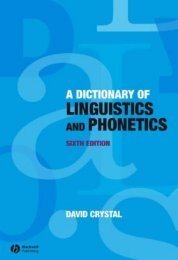url?sa=t&source=web&cd=3&ved=0CC0QFjAC&url=http://www.teachingenglish.org.uk/sites/teacheng/files/B369-Young-Learners-Activity-Book_v10
url?sa=t&source=web&cd=3&ved=0CC0QFjAC&url=http://www.teachingenglish.org.uk/sites/teacheng/files/B369-Young-Learners-Activity-Book_v10
url?sa=t&source=web&cd=3&ved=0CC0QFjAC&url=http://www.teachingenglish.org.uk/sites/teacheng/files/B369-Young-Learners-Activity-Book_v10
You also want an ePaper? Increase the reach of your titles
YUMPU automatically turns print PDFs into web optimized ePapers that Google loves.
TeachingEnglish <strong>Young</strong> <strong>Learners</strong> <strong>Activity</strong> <strong>Book</strong><br />
Activities<br />
Alternatives<br />
• This game can be played with any vocabulary set. It can also be played with sound / letter<br />
pairs, such as the letter ‘C’ and a picture of a car.<br />
• The same game could be played with question/answer pairs or with matching sentence halves<br />
to practise grammar points. For example, matching tenses and adverbs: one set of cards has<br />
time adverbs such as yesterday, l, twice a day, since 2000, next week. The other set has<br />
phrases such as I went to the doctor’s, I’m not feeling very well, I brush my teeth, I’ve been at<br />
this school, I’m going to the USA.<br />
• The children can draw the pictures on pieces of paper/card in preparation for the game.<br />
• Gulanara Janova (Ge<strong>org</strong>ia) suggests another game with cards which she calls ‘Fishing’.<br />
Put the prepared vocabulary picture cards, or objects into a box or bag. Ask the children to<br />
come to the front one at a time to pick a picture/object out of the bag/box – tell them they<br />
are ‘catching a fish’. The child who has caught a fish has to name it. If they name it correctly,<br />
they take it back to their seat. If they cannot name it, they have to put it back in the bag/box.<br />
The child with the most ‘fish’ at the end is the winner. This activity can also be used to revise/<br />
practise grammar, for example, children can describe their picture (e.g. ‘It’s a big, black cat’)<br />
or say what their classmates have caught (e.g. ‘I have a cat, Dana has a horse, Ivan has a duck<br />
and Josi has a lion.’).<br />
No resources?<br />
Make one set of cards and either play as a whole class or bring a group to the front to play while<br />
the others watch. Alternatively, call 14 students to the front and tell seven they are fruit pictures<br />
and seven that they are fruit names. Ask them to sit down. Children from the class call out pairs,<br />
for example, ‘Mohammed is an apple picture and Ali is an apple word’. If they are correct, they get<br />
a point. If not, the turn moves to another child.<br />
© British Council 2012<br />
53





